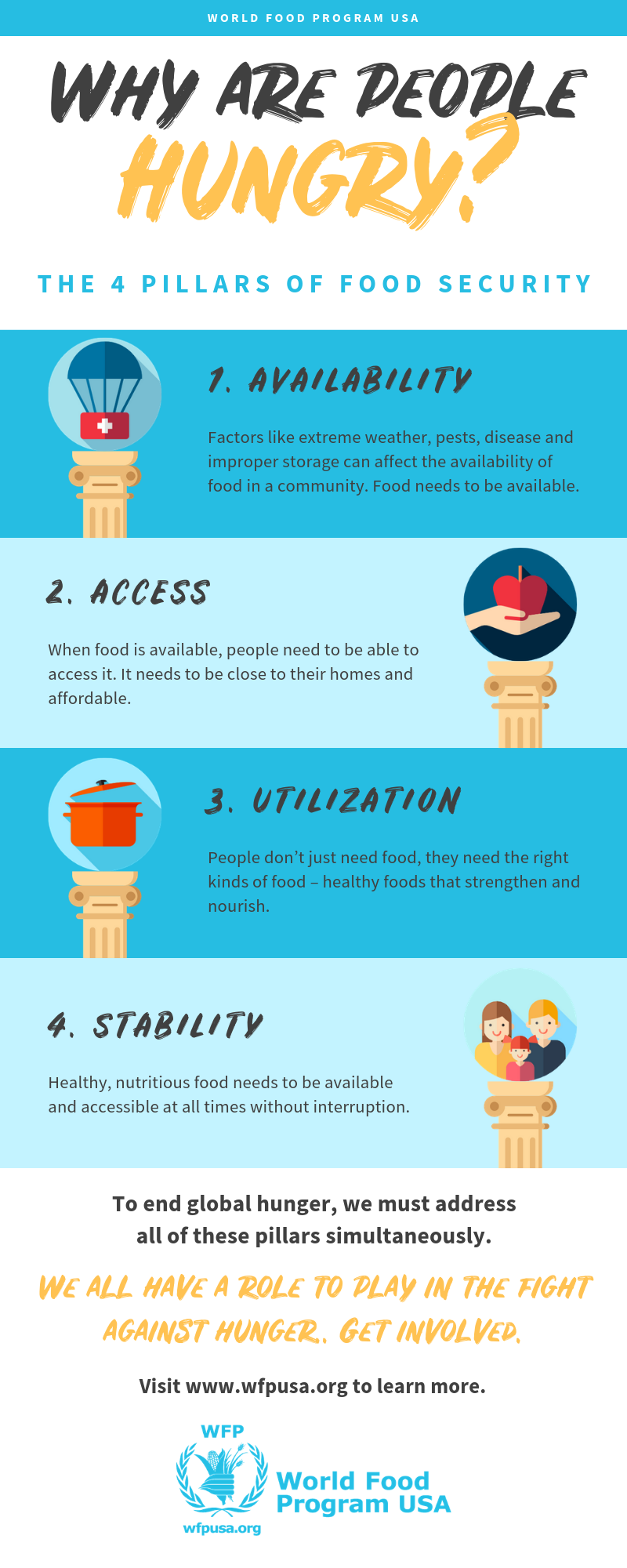Climate Change and Nutrition
Published: May 5, 2020
By 2050, the global population is expected to reach 9.7 billion people. Feeding two billion more people than the current global population would, by itself, be an extraordinary challenge. Feeding two billion additional people—while also facing significant temperature increases, more extreme weather events, changes in water availability, and loss of land resulting from climate change—will undoubtedly strain global food production and lead to food insecurity for millions of individuals around the globe. When we imagine a world with climate change, we often imagine crops being destroyed by unpredictable weather events, such as the Australian wildfires earlier this year. But do we give much thought to the crops being grown in this new climate and the impact they may have on food security?

Image reproduced from World Food Program USA, 2019
Food security is defined by the United Nations as the condition when “all people, at all times, have physical and economic access to sufficient safe and nutritious food that meets their dietary needs and food preferences for an active and healthy life.” Food security is made of four pillars: 1) food availability, 2) food access, 3) food utilization, and 4) food stability. Most research and news headlines at the intersection of food and climate change focus on the threat to the first two pillars, food availability and access, stressing that we are already seeing both challenges due to shortages in arable land.
To address these challenges, the global agriculture community has primarily. This is taking place through investments in agricultural research and development, where researchers and farmers are trying to understand challenges such as how to grow more food in already resource-strapped areas or how to incorporate vertical farming practices into cities. There are also researchers trying to better understand the impact of a phenomenon known as “carbon fertilization,” where higher levels of CO2 lead a crop to produce more. Although carbon fertilization may lead to increased yields, there is recent research showing it may not be all good news: increased CO2 decreases nutrient content in some crops. Thus, although the global agriculture community has focused on producing more, the question of how CO2 is impacting the quality of these crops has largely been absent from mainstream conversation. What happens if we increase food availability without keeping in mind the impacts of climate change on the nutritional quality of the food that is produced?
One impact is that nutritional deficiencies could skyrocket, especially in areas already impacted by climate change and food insecurity. Research on the estimated effects of future CO2 concentration suggests that protein, zinc, and iron nutrients decrease when exposed to elevated CO2 . Each of these nutrients is incredibly important, especially for development and cognition: zinc, a mineral responsible for growth and development during pregnancy and childhood, could be reduced in over 200 million individuals worldwide due to increased CO2. Protein deficiencies due to increased CO2 could total over 1.5 billion globally, while 1.4 billion people could be at increased risk of iron deficiencies worldwide. Shortages in these critical nutrients could lead to nervous system failures, along with stunting, underdevelopment, fatigue, and even death.
Research to better understand the impact on crop nutrients is still underway, with many other important minerals and vitamins being examined for changes due to climate change. In 2019, the EAT-Lancet Commission published a report focusing on this very issue: how do we feed nearly 10 billion people in a healthy and sustainable way, without harming the planet and each other? This report was one of the first high profile mentions of the need to focus not just on quantity of food, but the quality of food in this new climate. It is the hope of this author that the scientific and agricultural community will continue to invest in understanding the effects of a warming climate on the quality of our food. The health of millions depends on it.
Written by Kat Sisler.



Discussion